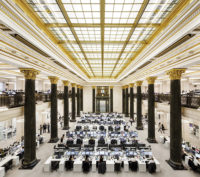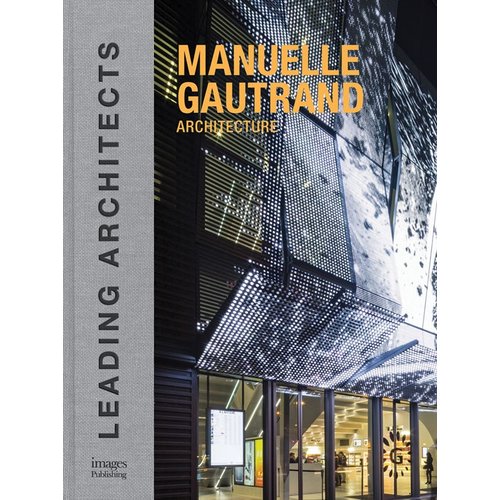Total Lighting Solutions lights the way for Vancouver's new transit system
Soft, tranquil, diffuse — not words you would expect to describe the light in a subway. Vancouver’s new Canada Line, an extension of the city’s rapid-rail transit, opened in August 2009, ahead of schedule for the 2010 Olympics, and is already carrying more than 100,000 passengers a day — well above anticipated ridership. Worth about 10 road lanes of transit capacity, the line serves Metro Vancouver’s busiest north—south corridor and links the city center to Vancouver International Airport. The line, a partnership of public and private sectors, comprises 12 miles of track and 16 new stations. Outside the city center, elevated stations with glazed walls serve a raised guideway; in a dense cityscape, glass headhouses at street level lead to underground stations. Seven architecture firms designed the stations, including Busby Perkins + Will, Hotson Bakker Boniface Haden (HBBH), Hywel Jones Architect, Kasian Architecture, Stantec, VIA Architecture, and Walter Francl Architect. A unified lighting design serves them all.
The design achieves a quality of calm for the new transit stations. “We wanted the stations to be elegant and disciplined, dignified and environmentally responsible,” explains Galina Zbrizher, principal of Total Lighting Solutions, author of the master plan for the Canada Line’s lighting scheme, and the lighting designer responsible for the individual stations. “We wanted the public to experience the stations as safe, easy to navigate, dynamic, and an example of public money responsibly spent.”
Zbrizher’s first and most significant move was to support her client, InTransitBC, in convincing the transit agency to accept modified lighting criteria that would reduce light output quantities in exchange for criteria more focused on the quality of light distribution. “In the past decade, we’ve learned a lot about how people see,” says Zbrizher. “You don’t see light, you see surfaces. When you see what is around you, that’s when you feel safe.” For example, a relatively small amount of light washing a wall makes a space brighter than a large amount without relation to surface. Similarly, independent of the quantity of light, vertical illumination that allows transit users to see the face and body of someone approaching them increases their feeling of safety.
The new standards for the Canada Line reduce light levels to accord with current industry recommendations, relating them to available daylight and the reflectance values of finishes. Additionally, they address light quality — emphasizing visibility, visual comfort, uniform illumination of surfaces, shadow and glare reduction, and the clear demarcation of the platform edge. Compared to the original system, the new design saves 1.5 million kilowatt hours per year. An informal survey of users confirms the effectiveness of the reduced wattage, reports Zbrizher: Although light levels in all areas except the platforms are roughly half of those on Vancouver’s existing lines, 80 percent of survey respondents said that the Canada Line stations are brighter, and every respondent said that the stations feel safe.
Once updated standards were in place, Zbrizher developed a systemwide concept based on a limited vocabulary of luminaires and repeated patterns. The concept takes consistency as its watchword. The entire system uses no more than five different lamps in addition to LEDs, and the majority of luminaires use linear fluorescents with a narrow-lensed aperture. Prioritizing safety and visual comfort, the design deploys its luminaires in disciplined patterns that repeat throughout the system.
To improve wayfinding and passenger flow, all luminaires within a station are oriented in the direction of travel. A line of light in the concourses and connectors leads from station entrance to train platform. In each location, an associated pattern of light helps to make orientation intuitive within the stations: a double row of linear fluorescent downlights where fare-paid zones begin; a series of downlights over vertical circulation (fluorescent for shallow areas and metal halide for deeper volumes in fixtures adapted to make the difference virtually undetectable); indirect lighting for the platform ceiling; and a line of light above the platform edge and along the opposite wall.
The lighting provides a strong graphic language that unifies the stations, supports user orientation, minimizes capital and maintenance costs, and adapts to the varied architecture.
As the architects worked independently and on an aggressive schedule, you might expect the lighting to have been applied to, rather than integrated with, the architecture. “Aesthetics and design were as much a consideration as safety and energy,” says Zbrizher. To support the variety of expression, fixtures are clean-lined or concealed. It helps that the architectural module is consistent, derived from platform length, so the lighting module can follow suit. Length and spacing of fixtures corresponds to the common interval of columns, mullions, and ceiling elements.
“It would have been easy for me to play,” Zbrizher says of the temptation to develop specific schemes in response to the design of each station. But she held to her conviction that the architecture, as well as the users and client, would be best served by a consistent approach. The result is a disciplined set of relationships in which a strong, clean lighting design supports the full range of the stations’ architecture.
Katharine Logan lives and writes in British Columbia.




Post a comment to this article
Report Abusive Comment